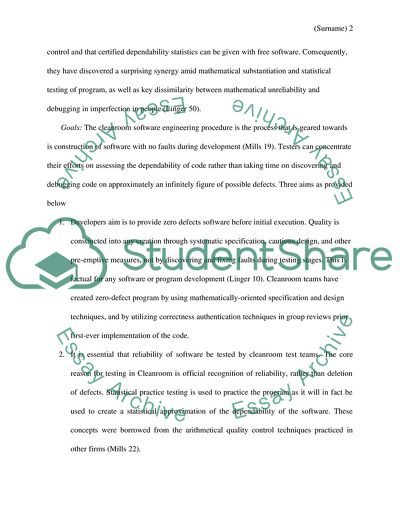Cite this document
(Cleanroom Software Engineering Implementation Business Plan Example | Topics and Well Written Essays - 2000 words, n.d.)
Cleanroom Software Engineering Implementation Business Plan Example | Topics and Well Written Essays - 2000 words. https://studentshare.org/information-technology/1813934-cleanroom-software-engineering
Cleanroom Software Engineering Implementation Business Plan Example | Topics and Well Written Essays - 2000 words. https://studentshare.org/information-technology/1813934-cleanroom-software-engineering
(Cleanroom Software Engineering Implementation Business Plan Example | Topics and Well Written Essays - 2000 Words)
Cleanroom Software Engineering Implementation Business Plan Example | Topics and Well Written Essays - 2000 Words. https://studentshare.org/information-technology/1813934-cleanroom-software-engineering.
Cleanroom Software Engineering Implementation Business Plan Example | Topics and Well Written Essays - 2000 Words. https://studentshare.org/information-technology/1813934-cleanroom-software-engineering.
“Cleanroom Software Engineering Implementation Business Plan Example | Topics and Well Written Essays - 2000 Words”. https://studentshare.org/information-technology/1813934-cleanroom-software-engineering.


